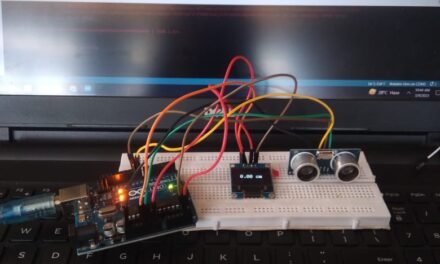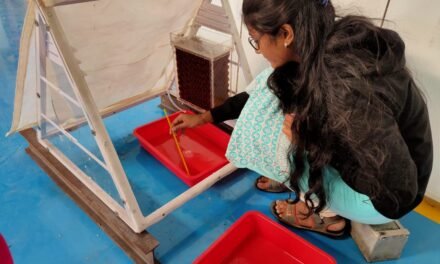Title: Finding Biological Oxygen Demand of given Sample.
Objective:
- To set up the SOP of BOD at ASK Chemicals Industry at Rajangaon.
- Performing BOD of given samples.
What Is BOD?
The amount of Oxygen, taken up by the microorganisms that decompose the organic waste matter in wastewater is known as biological oxygen demand. It deals with the amount of oxygen consumption (mg O2 L− 1) by aerobic biological organisms to oxidize organic compounds. This BOD is an important parameter for assessing water quality.
Therefore it is used to measure the number of certain types of organic water pollution BOD is calculated by keeping a sample of water containing a known amount of oxygen for five days at 20 degrees Celcius.
Requirement List for performing BOD analysis:
Following is the list of Chemicals & Glassware required for performing BOD:
| Sr.No. | Name of Chemical/Glassware |
| 1. | Sulfuric Acid |
| 2. | Sodium hydroxide |
| 3. | Sodium sulfite |
| 4. | Acetic acid |
| 5. | Potassium iodide |
| 6. | Starch/ Starch Indicator |
| 7. | Potassium Dihydrogen Phosphate |
| 8. | Dipotassium Hydrogen Phosphate |
| 9. | Disodium hydrogen phosphate |
| 10. | Ammonium chloride |
| 11. | Sodium iodide |
| 12. | Sodium azide |
| 13. | Calcium carbonate |
| 14. | Magnesium sulfate |
| 15. | Ferric chloride |
| 16. | Manganous sulfate |
| 17. | Sodium thiosulfate |
| 18. | Volumetric Flask (100 ml) |
| 19. | BOD Bottles (300 ml) |
| 20. | pH meter |
| 21. | Measuring cylinder |
| 22. | Bubbler |
Reagent & Solution Preparation for BOD (12/04/2022):
The list of Solutions & Reagents required for BOD is as follows:
| Sr. No. | Name of Solution/Reagent |
| 1. | 1 N NaOH |
| 2. | 1 N Sulfuric acid |
| 3. | Potassium iodide 10% w/v |
| 4. | Manganous sulphate 34.4% w/v |
| 5. | Acetic acid 50 % |
| 6. | Calcium carbonate 27.5% w/v |
| 7. | Magnesium sulfate 22.5% w/v |
| 8. | Ferric Chloride 0.15% w/v |
| 9. | Sodium sulfite 0.025 N |
| 10. | Sodium thiosulfate 0.025 N |
| 11. | Phosphate buffer solution |
| 12. | Alkali-Iodide-Azide Reagent |
| 13. | Starch Indicator |
| 14. | Dilution water |
The above Reagents and Solutions were made as follows:
1. 1 N NaOH:
4 g of Sodium Hydroxide pellets were taken in 50 ml of distilled water in a volumetric flask, making up to 100 ml with D.W.
2. 1 N Sulfuric Acid:
Formula: Grams of compound needed= (Normality desired) x (Equivalent mass) x (Volume of Solution) = (1 N)(49)(0.1 L) =4.9 g Now, the Sulfuric acid we have in lab is of 95%. Accordingly, to make 1 N Sulfuric acid solution= (Grams of Compound need)/ (% of Concentration) x (Specific gravity) = (4.9 g) / (0.95 x 1.84) = 2.8 ml of sulfuric acid is added to a small amount of water in a volumetric flask very slowly, then makeup to 100 ml by using D.W. (Note: % of Concentration and Specific gravity is usually given on container of sulfuric acid)
3. Potassium iodide 10% w/v:
10g Potassium iodide was taken in 30 ml of distilled water in a volumetric flask, make up to 100 ml with D.W.
4. Manganous sulphate 36.4% w/v:
36.4g Manganous sulphate was taken in 30 ml of distilled water in a volumetric flask, make up to 100 ml with D.W.
5. Acetic acid 50%:
50 ml acetic acid was taken in 30 ml of distilled water in a volumetric flask, make up to 100 ml with D.W.
6. Calcium carbonate 27.5% w/v:
27.5 g Calcium carbonate was taken in 30 ml of distilled water in a volumetric flask, make up to 100 ml with D.W.
7. Magnesium sulfate 22.5% w/v:
22.5 g of Magnesium sulfate was taken in 30 ml of distilled water in a volumetric flask, making up to 100 ml with D.W.
8. Ferric chloride 0.15% w/v:
0.15 g Ferric chloride was taken in 30 ml of distilled water in a volumetric flask, make up to 100 ml with D.W.
9. Sodium sulfite 0.025 N:
MVS Formula= Molecular weight x Volume X Strength / 1000 For 0.025 N Sodium sulfite = 126 x 100 x 0.025 / 1000 =0.315 g 0.315 g Sodium sulfite was taken in 30 ml of distilled water in a volumetric flask, makeup to 100 ml with D.W.
10. Sodium thiosulfate 0.025 N:
MVS Formula= Molecular weight x Volume X Strength / 1000 For 0.025 N Sodium thiosulfate = 248 x 100 x 0.025 / 1000 =0.62 g 0.62 g Sodium thiosulfate was taken in 30 ml of distilled water in a volumetric flask, makeup to 100 ml with D.W.
11. Phosphate buffer Solution:
0.85 g Potassium dihydrogen phosphate, 2.17 g Dipotassium hydrogen phosphate, 3.34 g Disodium hydrogen phosphate, and 0.17g Ammonium chloride were taken in 30 ml of distilled water in a volumetric flask, making up to 100 ml with D.W.
12. Alkali-Iodide-Azide Reagent:
50 g Sodium hydroxide and 13.5 g Sodium iodide were taken in 30 ml of distilled water in a volumetric flask, make up to 100 ml with D.W. Then add 1 g Sodium azide to it.
13. Starch Indicator:
100 ml of d.w was taken and kept for boiling. 1 g of starch was added to it with continuous stirring. On cooling, the filtrate was taken and used as the starch indicator.
14. Preparation of Dilution Water:
- 5 liters of double distilled water were taken in a container.
- This water was aerated for not less than 12 hours.
- Then allowed to stable for 6 hours at 20degree Celcius.
- 5 ml of 27.5% w/v solution of calcium carbonate was added to it.
- 5 ml of 22.5% w/v solution of magnesium was added to it.
- 5 ml of 0.15% w/v solution of ferric chloride was added to it.
- 5 ml of Phosphate solution was added to it.
- Mixed well and was kept at a stand for 2 hours.
The procedure of BOD:
BOD analysis was done of water samples from Buckets of Experiment set 2 done for the ETP plant project (http://vadic.vigyanashram.blog/2022/04/07/project-microbial-culture-maintainance-in-effluent-treatment-plant-etp/).
The procedure followed for BOD analysis of 5 different samples from 5 Buckets is as follows:
Part A) Neutralization of Sample:
The accuracy of the BOD test totally depends upon the proper bacterial growth, present in the water sample. The pH of the test sample should be adjusted to 7+/- 0.2 before the incubation for five days for proper results.
- 50 ml of sample was taken to be tested in a beaker.
- Neutralized the pH of the sample using 1 N NaOH if pH is lower than 7 and using 1 N H2SO4 if pH is higher than 7.
Part B) Removal of Chlorine:
Chlorine is a strong oxidizing agent and chlorine content in water can inhibit microbial growth during BOD analysis. It should be removed from the sample before starting BOD analysis.
- Take another 50 ml of sample to be tested in a conical flask.
- 2.5 ml of 50% acetic acid was added.
- 2.5 ml of 10% potassium iodide was added.
- 1 ml Starch indicator was added.
- Titrate it with 0.025 N Sodium sulfite solution.
- Note the reading and add the same amount of sodium sulfite solution to the above-neutralized solution in part A.
Part C) Determination of BOD of test sample:
- 12 BOD bottles having a volume of 300 ml were taken.
- In 2 BOD bottles, only dilution water was filled for Blank.
- Immediately bottles were closed such that there is no air bubble in the bottle. One is marked as D1 and another one as D5.
- 2 ml sample was taken in 2 BOD Bottles respectively. One is marked as D1 and another one as D5.
- One sample and one blank bottle (D5) were incubated at 20 degrees Celcius for 5 days in a BOD incubator.
- The remaining one blank and one sample bottle (D1) immediately was analyzed for DO (as directed below in the Part D section).
- One sample and one blank bottle (D5) in an incubator were analyzed for DO on the 5th day.
Part D) Test for DO (Dissolved Oxygen):
- 2 ml of 36.4% manganous sulfate solution was added by inserting the tip of the pipette into the sample at the bottom of the bottle. (As drops of solution can allow the inserting of oxygen into the solution).
- 2 ml of alkali-iodide-azide was added by inserting the tip of the pipette into the sample at the bottom of the bottle.
- Solutions were allowed to react with the oxygen in the bottle.
- Precipatation is observed. The precipitate is allowed to settle down at the bottom.
- Then, 2ml of Concentrated sulfuric acid was added by inserting the tip of the pipette into the sample at the bottom of the bottle.
- Mixed well to dissolve the precipitate.
- 203 ml of sample from the BOD bottle was taken to the Erlenmeyer flask.
- It was then titrated against 0.025N sodium thiosulfate solution by using a starch indicator until the blue color disappears. Burette reading was noted down.
Note: Follow the above procedure for DO for all samples to be tested and for the blank.
Calculations:
Blank Correction = B.R. of Blank at Day 1 – B.R. of Blank at Day 5
BOD mg/L = [(B.R. for sample at Day 1 – Day 5) – Blank correction] x Dilution factor
Dilution Factor = Bottle Volume (300 ml)/ Sample Volume





